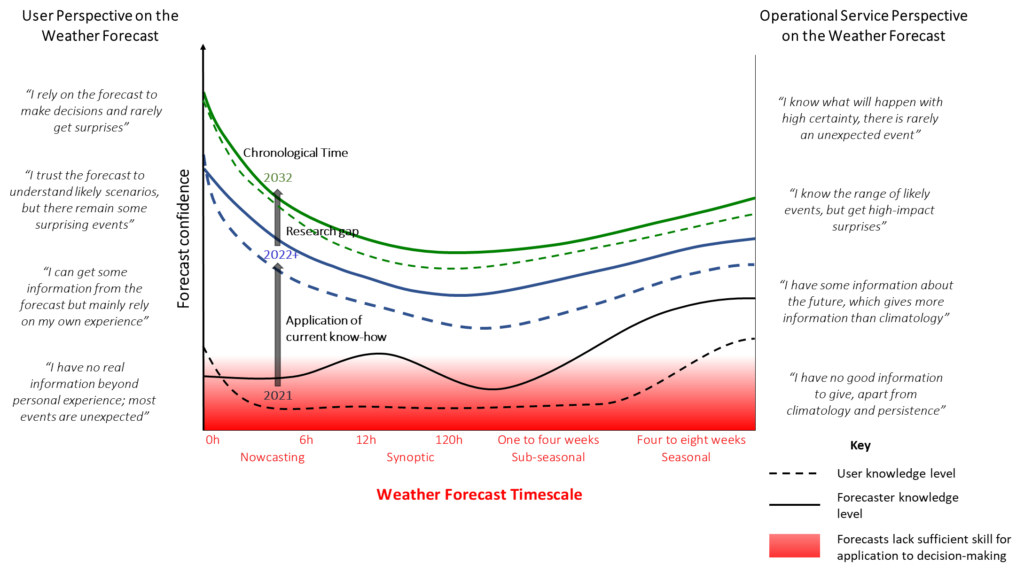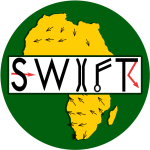Urgent investment in African weather forecasting aids weather-and climate-resilient future and contribution to the UN Sustainable Development Goals across the continent: joint paper by the GCRF African SWIFT and ForPAc SHEAR projects
The SWIFT project has taught us a lot about the state of African weather forecasting, the opportunities for the future, and some of the false assumptions which can be made. In partnership with the ForPAc SHEAR project, we have published a White Paper documenting our understanding of the African weather forecasting challenge and our vision for rapid progress over the coming decade if suitable investment is made. We consider that there can be a revolution in the delivery of critical, life-saving information to the people and businesses of Africa.
Throughout the course of the GCRF African SWIFT programme (2017-2022), experts in African meteorology, climate services and capacity-building, from Africa, the UK and international partners, have worked together in research, operational forecast delivery, co-production activities with users and provision of training. Through these hands-on experiences, we have gained knowledge, insight and evidence regarding the steps needed to enable a transition to a weather- and climate-ready future for the population of sub-Saharan Africa, with a vision to maximise forecast use and potential for disaster risk reduction through preparedness action across seamless weather timescales.
Published in partnership with the Forecast-Based Preparedness Action (ForPAc) programme, we are pleased to present our vision in the form of this White Paper on the Potential of Operational Weather Prediction to Save Lives and Improve Livelihoods and Economies in Sub-Saharan Africa to all parties who can take forward this manifesto to progress African weather forecasting in the short- to medium-term. Here, we make the case for this huge opportunity for great humanitarian and climate resilience impact on the 5–10-year timescale.
Figure 1 summarises our vision. We argue that critical improvement in the skill and usefulness of forecasts can be achieved in a small number of years, across a wide range of forecast timescales (from the black line to the blue line): such improvements have been demonstrated in the SWIFT, ForPAc and other recent projects in limited locations and user sectors, but are some way from being widely realised across Africa. Further improvements are likely if suitable research is conducted (green line).

Key messages of the White Paper include:
- In Africa, lives, livelihoods, property, and infrastructure are directly and significantly impacted by weather-related events.
- Strengthening national and international meteorological and climate science capacity has the potential for transformational change across the African continent.
- In contrast to mid-latitudes, many tropical forecasts of user-relevant quantities have very low skill, making them of marginal use to stakeholders.
- Research remains to be done, to deliver adequate performance of forecasting systems, but significant improvements in accuracy and relevance are within our reach.
- Co-production (the bringing together of the producers of weather and climate information with those who use the information to make decisions) of weather and climate services is needed, which depends on meteorological agencies having the tools and know-how to meet decision-makers’ needs.
- Systematic and impact-based forecast evaluation, engaging feedback from directly affected populations and decision-makers, is critical to forecast improvement, to economic sustainability of services, and for effective forecast use.
- Partnership between meteorological and climate research-related sectors is needed to sustain scientific and operational improvements.
- Weather forecasting services should be economically self-sufficient, but this is not simple as there is a need to expand capacities, building on current national meteorological services capabilities.
- We outline a roadmap for what can be achieved on a 5-10-year timeframe, signposting the key steps needed to realise the socio-economic benefits of improved weather forecasting across Africa.
Ultimately, international investment today is critical to realising the socio-economic and environmental benefits of improved weather forecasting across the African continent. The recommendations outlined throughout our briefing note highlight key steps needed to support African countries in achieving the UN Sustainable Development Goals by building climate-resilience, protecting lives and livelihoods, and delivering significant economic benefits in the coming decades.
